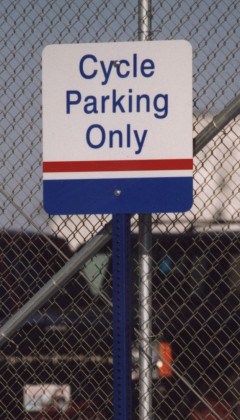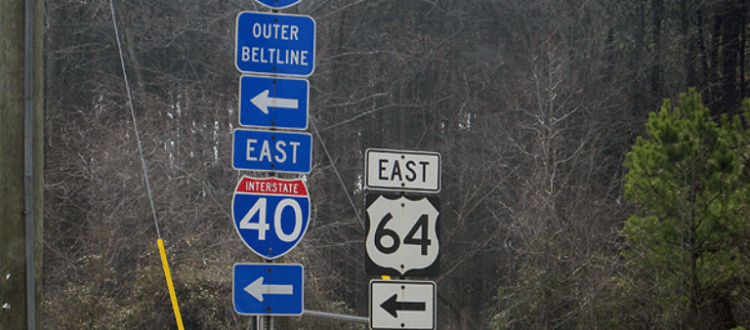A customized signage that is non-standard. Standard signs, as discussed in the previous post, are the ones like Stop, School Zone signs, or Speed Limit guide markers. Custom traffic signs are used in private communities and military bases. They are even used on the interstate.
In the previous article I discussed standards for reflective road signs which are set nationally by the US Department of Transportation (USDOT), or by local states conforming to the USDOT’s Manual on Uniform Traffic Control Devices (MUTCD). This manual gives all the regulations for various aluminum traffic signs, but doesn’t address a non-standard or personalized one.
Where a Custom Traffic Sign may be Used – Regulations Regarding Custom Traffic Signs
So, when you’re driving down the interstate, and you see signage for the next exit that says there’s a Shell Station, a Conoco Station, and a McDonalds restaurant, who sets the standards for those? Well, if you guessed that your state DOT regulates them, you’d be correct…almost. Some states allow only copy on a sign, whereas others allow full color logos for the business being advertised.
Businesses pay an annual fee to have their logo or name on these displays, and usually only gas stations, restaurants, and hotels/motels are eligible to be listed on these custom traffic signs because they are businesses geared toward serving the interstate traveler. Obviously, those that allow company logos like a McDonalds logo allow design standards that they don’t set; the state DOT regulates just size and material standards on them
Is Every Single Signage Regulated by the USDOT or State DOT, or are there Exceptions with Personalized Designs?
There are many other types of customized road markers though. The US Postal Service has it’s own specs used at its facilities. Military bases also regulate their own. Private developments are able to design to their own specs as long as it’s approved by an inspector from the county or state. HDU or wood are used in some high end developments.
Various Allowable Materials – It Depends on where You’re Located or where Your Signpost will be Placed
 Back in the early 2000’s, we produced dozens of personalized signage made of sandblasted redwood for a development near a famous Colorado ski resort. They needed some degree of reflectivity to pass inspection, so each had reflective elements, typically the letters. The developer wanted them to have a rustic look, so each had the wood grain showing.
Back in the early 2000’s, we produced dozens of personalized signage made of sandblasted redwood for a development near a famous Colorado ski resort. They needed some degree of reflectivity to pass inspection, so each had reflective elements, typically the letters. The developer wanted them to have a rustic look, so each had the wood grain showing.
Material-wise, repeating standards from the MUTCD, for interstate signs varying thicknesses of aluminum used are .080″ thickness, .100″ thickness, and .125″ thickness aluminum. As I also stated in the last article, the size of the signage and local environmental conditions will determine the thickness of the material to be used, and some states require extruded aluminum larger than a specified square footage.
The MUTCD specifies what types of aluminum to use. One of the most used grades of aluminum is classification 5052-H38. The number refers to the purity and hardness of the material. They also must be alodized or anodized to prevent corrosion. Corrosion is to an aluminum display as rust is to steel, only faster.
In my next article, I’ll talk about digital and illuminated traffic signs – which are also a customized type. If you want to check out more about custom traffic signs, browse here: https://www.visigraph.com/road-street-traffic-signs-accessories/.
Good Read! Can I get a quote NOW!?
Popular Posts:




